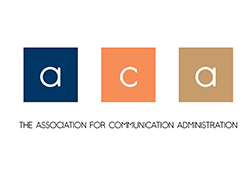Abstract
This article explores the integration and amalgamation of norm-referenced and criterion-referenced perspectives in a manner that is particularly appropriate for use in basic or introductory speech communication performance courses. Possibly the greatest virtue of using criterion-referenced grading of speeches in a basic speech performance course is the generation of positive affect toward performance. Because students identify with their speeches, they are much more demoralized by negative feedback about their work on these assignments than for others. By setting appropriate minimal performance criteria that most beginning students can achieve, morale remains high, there is an atmosphere of success, and, in fact, most students will have mastered the skill levels that one can reasonably expect from a graduate of the basic course. For the content aspect of the course, norm-referenced examinations provide appropriate distributions that, when combined with speaking scores, still support the grade expectations of the school or department. Now, somewhat more of the variance in final course grades is accounted for by the norm-referenced aspect of the dualistic grading system. In summary, there are important benefits in using both grading methods. Students prefer criterion-referenced grading for performances and are especially appreciative of the fact that they can work toward mastery using whatever reasonable amount of time they need. Secondly, they like norm-referenced grading for the content components of the course because that's what they expect on the basis of past experience. Third, elevating the difficulty level of content exams seldom creates new problems, especially when the results are somewhat positively curved.
Recommended Citation
Behnke, R. R., & Sawyer, C. R. (1998). Perspectives on norm-referenced and criterion-referenced grading in introductory speech performance courses. Journal of the Association for Communication Administration, 27(3), 147–153.


